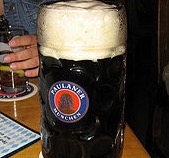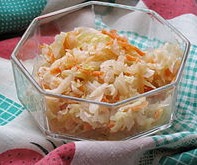April already! As I am going over my daily stream of microbiome literature alerts, I often notice new developments in the microbiome field. On this April 1st, I thought it might be nice to present some exciting new food items and beverages that are created using human microbiome strains. This is one of the best novel applications of microbiome research by far, and definitely the tastiest.
Think of it: Our bodies have evolved with our symbionts over a period of millions of years. We are a Holobiont. We are One with The Microbes. We have to Treasure the Microbes. Respect the Microbe! Microbes Are Us. They have done so much for us: digest our food, protect us against The Evil Bugs, and control our minds and moods.
But what do we do with them? We shed our little friends, we flush them down the toilet, wash them out in the laundry, or absorb them in a tampon. It’s ungrateful. It’s not fair. It’s probably illegal. This has to stop.
It’s time to honor our microbial buddies and find alternative uses for them. It’s the best way to recombine microbe and human – outside our bodies. It’s the ultimate recycling of our symbiotic relationships.
Yesterday already brought us a first glimpse of this exciting new development, with a beer brewed with a Lactobacillus strain from the vagina of a Czech model. But it does not stop there. I have found many more tasty examples. Here is a list of some sensational new food and drink products, made with microbes from humans. And with links to papers too!
Gouda Gold

Gouda market square with cheese rounds, Wikipedia
A delicious extra mature hard cheese, ripened with a Lactobacillus pisseri strain isolated from the midstream urine of a 38-year old Dutch woman with a recurrent urinary tract infection. Made in my home town of Gouda, The Netherlands, it’s slightly salty, a bit sticky to the teeth, with a fruity tang and a sweet finish. It would pair wonderfully with a glass of blood-red port wine. According to my husband, aged Gouda is better than young Gouda, and I love him dearly for that.
The Female Urinary Microbiome: a Comparison of Women with and without Urgency Urinary Incontinence – Meghan M. Pearce – mBio
Navel Gazer

Kefir, Wikipedia
This kefir drink is naturally sweet, but slightly tangy and bubbly. Loaded with valuable minerals and vitamins, it’s fermented with Staphylococcus navelinus, cultured from the bellybutton of a toddler visiting Darwin Day at the Museum of Natural Sciences in Raleigh, NC. During the time of sampling, the 2-y old was wearing a fully loaded cotton diaper, ensuring enough fluff could be isolated from his belly button.
A Jungle in There: Bacteria in Belly Buttons are Highly Diverse, but Predictable – Jiri Hulcr – PLOS ONE
Cardinal Cheese

Windsor Red Cheese, Wikipedia
A medium soft cheese with cardinal red veins, made for all who love Stanford University or college football. It’s made with the odorous Corynebacterium axillagenes isolated from the unshaved armpit of a 22-year old male Stanford football player (QB) after a long training session on an October Wednesday. Go Cardinals!
Mapping axillary microbiota responsible for body odours using a culture-independent approach – Myriam Troccaz – Microbiome
Beard Beer

Lager beer, Wikipedia
We all know it: those hipster beards don’t only look like pubic hair at the wrong anatomical site, they’re also full of microbes. This special lager beer lends its rich taste from the unique metabolic profile of Saccharomyces beardevisiae, which was isolated from the facial hair of a microbiology professor in California. Beard Beer is a dark, cool fermented lager, with a wonderful, deep rich brown color, a hint of caramel and chocolate, and a very clean hop profile.
Bacterial ecology of hospital workers’ facial hair: a cross-sectional study – E. Wakeam – Journal of Hospital Infection – 2014
Kearbasa

Kielbasa sausages, Wikipedia
Moist and tasty, these delicious sausages are literally an ear full! They are fermented using a special strain of Streptococcus earolyticus, isolated from the right ear of an 8-year-old boy with a 3-year history of ear infections, who had not taken antibiotics in the previous 3 months. These sausages will be the first to disappear during your Spring Break BBQ, so make sure to make lots of them. You will never listen to a sausage this way again.
A Study of the Bacterial Microbiota in a Pediatric Patient With Chronic Serous Otitis Media Using 16SrRNA Gene-Based Pyrosequencing – Cindy M. Liu – Arch Otolaryngol Head Neck Surg. 2011
Crapardelli Chocolate Squares

Chocolate pieces, Wikipedia
Available in dark and milk chocolate, and a new San Francisco favorite, Crapardelli Squares are individually wrapped one-bite-pieces of heaven. Their secret ingredient is a Candida shitpoopfaecalis strain isolated from a severely ill patient who was admitted to the ICU with a 6-month history of diarrheal illness. As described in an mBio paper (citation below), this patient’ stool microbiome was extraordinary simple, composed of a “2-member pathogen community consisting of one Candida taxon and one bacterial taxon”. That’s when you know you’ve found that really special strain! So when life gives you C. shitpoopfaecalis, you make Crapardelli Squares. Each chocolate square is filled with a runny yellowish brown substance that’s a perfect match to the “Liquid consistency with no solid pieces” scale on the Bristol Stool Chart– or it might be caramel; who knows?
Membership and Behavior of Ultra-Low-Diversity Pathogen Communities Present in the Gut of Humans during Prolonged Critical Illness – Alexander Zaborin – mBio
Titfandel

Red wine, Wikipedia
This powerful, spicy red wine has a full body with notes of blackberry and pepper, and a hint of vanilla. It’s made with Lactobacillus delboobii, an isolate from the left mammary gland of a lactating 31-year old postdoc in a microbiology lab in the San Francisco Bay Area. Titfandel is aged in oak barrels in an undisclosed winery in famous Napa Valley, California. Tours of the winery cost $45 ($75 with wine tasting), start at the pompous gold fence, and leave every 15 min.
Human milk microbiota profiles in relation to birthing method, gestation and infant gender – Camilla Urbaniak – Microbiome
Sauerkrotch

Eastern European style Sauerkraut, Wikipedia
Known as “zuurkut” in the Dutch language, this food is similar to the more familiar Sauerkraut, but differs by its very unique way of fermenting the cabbage. In this revolutionary new production process, a special Leuconostoc bacteriovaginosis strain was used from the vagina of woman from Uganda or Korea. Since the labels of the swabs were hard to read, the authors are not quite sure if the source subject was from Uganda or Korea, nor what her BV status was. But who cares, when you can use this strain to make a delicious pickled fermented food? Zuurkut is crunchy, reddish, with a slightly fishy odor, with no artificial additives. Nothing but cabbage, salt, blood, and other vaginal fluids.
Species diversity and relative abundance of vaginal lactic acid bacteria from women in Uganda and Korea – L. Jin – Journal of Applied Microbiology
Fly like a Wiener

Wiener sausages, Wikipedia
Although not strictly from a human symbiont, I cannot write this post without mentioning this delicious tangy sausage. It’s fermented using Weissella maggotensis, a facultative anaerobic strain isolated from the midgut of flesh fly larvae found in a left-over hamburger lunch in the fridge of a Veterans Hospital near Palo Alto, CA. Maggots are frequently found in the breakroom of the research building, and this one turned out to be perfect for Wiener production. These sausages will literally fly from your plate.
Molecular phylogenetic profiling of gut-associated bacteria in larvae and adults of flesh flies – A.K. Gupta – Medical and Veterinary Entomology
Special mentions:
- Belly Button Kimchi, a fermented food created with Weissella lomanensis, using the fluff from Nick Loman
- Stoolt, a bold Stout beer brewed using fecal Lactobacillus faecalifartensis isolated from David Baltrus.
Big thanks to Wikipedia, as always for great pictures and information. And for lists like these: List of microorganisms used in food and beverage preparation.



Pingback: April 1, 2016 (the serious one) | Microbiome Digest – Bik's Picks
Pingback: April 2, 2016 | Microbiome Digest - Bik's Picks